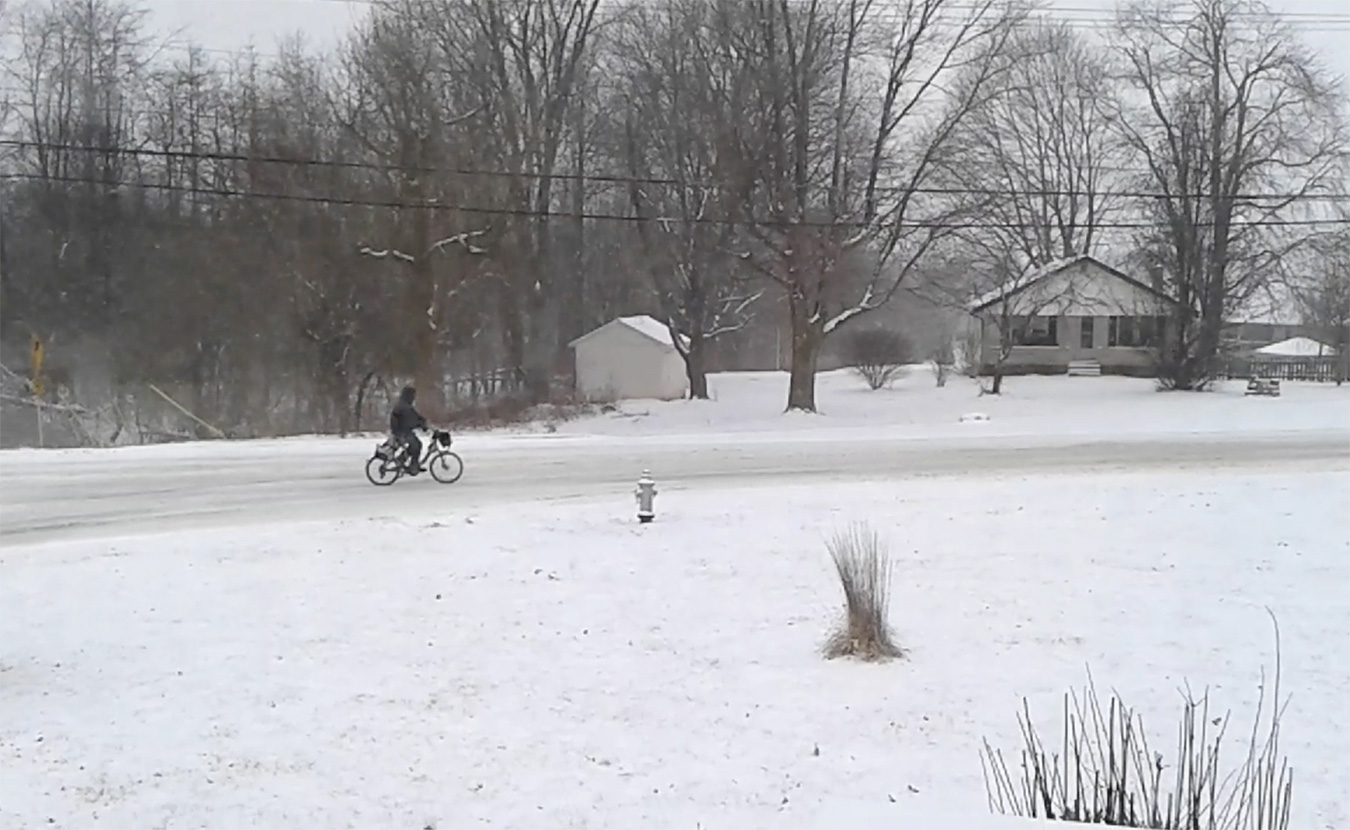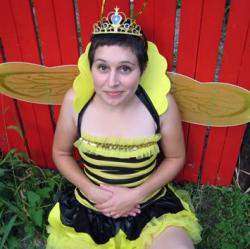What if you never need to hunt — or pay! — for parking again. Suppose you could also save on gas, shrinking your carbon footprint (and maybe your waistline) with just a modicum of effort. It’s doable, provided you’re willing to take to two wheels and leave your car at home.
As it happens, plenty of Bloomington bicyclists ride to and from work even in winter, and it’s more pleasant than you’d think. “There is nothing like the quiet stillness of riding just after a fresh snow,” says Michael Fox. “Especially when it’s sunny and over 20 degrees.” Fox, general manager of Lennie’s and the Bloomington Brewing Co. Brewpub, commutes by bike 17.5 miles each week.
Think biking from A to B would be too time-consuming? “During peak traffic times, it takes less time to ride than it does to drive,” Fox says.
The benefits don’t stop there. Bicycle commuters are entitled to a little extra cash from their employers, thanks to the Bicycle Commuter Act. The qualified bicycle-commuting reimbursement compensates bike commuters up to $20 a month or $240 annually for reasonable, bike-related expenses.
Bloomington’s miles of new bike lanes, paths, and mixed-use trails has made it increasingly commuter friendly. (The City of Bloomington website says Bloomington has “a total of almost 73 miles of bike lanes and trails, including 11 miles of dedicated bike lanes and 35 miles of designated bike routes.”) Mitch Rice, a bicycle commuter since 1998, chairs Bloomington’s Bicycle and Pedestrian Safety Commission and estimates the city’s number of commuting riders “has at least tripled in the last six years,” with his current estimate being from hundreds to over a thousand (more if you include students).
While the majority of riders used to ride recreationally, Rice says, “now the majority are destination riders [going] to work, to the store, to the park….” He’s also noticed an uptick in female riders and the use of bicycle trailers. “The bike lanes and paths have increased the feeling of safety, and we are working on creating greenways — streets where biking is encouraged — like the Allen Street Greenway,” he adds.
Car trouble
Overall, however, Indiana gets low marks from the League of American Bicyclists, which ranked us the 37th most bike-friendly state last year. To improve our standing, the group recommends, “Adopt a law prohibiting a motorist from opening an automobile’s door unless the motorist is able to do so safely,” meaning drivers would be legally required to check for a biker when opening their doors. We’re one of ten states without such a law.
The league also suggests adopting a “safe passing” law requiring motorists to give bicyclists a minimum 3-foot buffer zone while passing. Without such hard-and-fast guidelines (Indiana’s law says motorists should pass at a “safe distance”), motorists don’t always know how to interact with cyclists.
Kevin Romanak, a student and staffer at Indiana University’s School of Public and Environmental Affairs, began biking year-round five years ago. He rides 30 to 60 miles weekly and has been clipped by the side mirrors of passing cars twice. In other instances, he’s nearly been hit by cars pulling out of parking lots onto the road. “They either misjudged my speed or were not paying attention to the bike lane,” he says.
Fox, likewise, has had some negative interactions with motorists, including being deliberately “coal-rolled” during a group ride, and he says once, while commuting, “someone shouted profanities at me out their window and told me to get off the road.”
Dos and don’ts
Such harassment may be enough to drive bike commuters onto the sidewalk, but it shouldn’t. Indiana law states cyclists on the road have the same rights (and duties) as motorists. (And, anyway, Bloomington’s ordinance prohibits sidewalk riding if your wheel diameter is over 14 inches.)
Local laws also prohibit cyclists from running stop signs, traffic lights, or yield signs. Cyclists also may not ride in the wrong direction on one-way streets or alleys. With good reason, according to Rice: “A major factor in against-the-traffic riding is that the speeds are additive, while, with traffic, they are subtractive. If I am traveling at ten miles per hour and a car is obeying the city speed limit of 25 miles per hour, our crash speed is 35 miles per hour if we are going toward each other, but only 15 miles per hour if we are going the same direction,” he explains.
From bike boxes and signals to “contra-flow” and green bike lanes, understanding how Bloomington’s bicycle infrastructure is supposed to work matters, too. These elements make sharing the road much easier, but they’re by no means ubiquitous, so you’ll also need to know how to get around without them.
In the case of a one-lane road lacking designated bike areas, ride as far to the right as you can. But what about two lanes going the same way? Mike Biggs, a longtime Bloomington resident and bike commuter, rides about 200 miles per week, and recommends, “When there are two lanes going in the same direction and there’s no bike lane, the best lane for the bicyclist is in the middle of the right lane. They need to take the lane, so that cars switch lanes to go around them, rather than try to squeeze in between a car to the [motorist’s] left and the bicyclist on the right.”
Leigh Bush is a Ph.D. candidate in IU’s Department of Anthropology who rides ten miles daily. When it comes to safely sharing the road, she says, “The more predictable everyone can be, the better.”
Part of behaving predictably as a cyclist means signaling stops and turns and alerting pedestrians to your presence on multiuse trails. To that end, Indiana law requires bikes to be equipped with bells as well as front and rear lights. “You’re supposed to have a flashing red [light] in the back, because it helps drivers estimate distance better than a solid red,” Biggs says. “And, in the front, you’re supposed to have a solid white…. What a lot of people don’t know is that a flashing white light disrupts a driver’s ability to measure time and distance.”

Biking in the winter calls for a lot of gear — Nicholas Port used all of these items (some worn, some backup) for one 15- to 20-minute commute in 8°F weather. Click here to see the full list. | Photo by Nicholas Port
The right stuff
Although not mandated for riders over 18, helmets are always a good idea. So is a sturdy U-lock to keep your bike secure.
And as far as which bikes work best for all-weather commuting? Adam Rodkey regularly rides to his job at Bikesmiths on a mountain bike with wide tires during the winter months. “The only bike I would say is ‘bad’ for snow would be a road bike with slick, skinny tires,” Rodkey notes. “Those bikes will offer less traction and steering control and have tighter tolerances around the brakes … which means they pack up with snow and ice quickly.”
Deflating your tires slightly for winter riding can also help. “You’ll get more tread on the road, and you’ll be less likely to slip,” Biggs says. “But that means you’re pedaling harder, because more tire on the road means more resistance.”
If your bike doesn’t already have one, consider adding a rear fender to keep your backside clean and dry. Waterproof shoes and breathable raingear are also good investments.
“When biking in the winter,” Biggs says, “it’s not just about regulating how cold it is [outside] but regulating how hot you get when bicycling.” Because they don’t trap moisture like cotton can, he prefers moisture-wicking, synthetic fabrics and wool. He also keeps a hair dryer by the door to give himself a quick blast underneath his coat before heading out. “It provides this wonderful layer of warmth that lasts for about ten minutes in the cold, no matter how cold it is,” Biggs says.
Getting started
Before your first official bike commute, experiment with different routes. Doing a few dry runs on your days off will help you to determine how much time you might need and how well you handle biking in the elements.
You’ll find more still more commuting tips here, and you can also connect with B-Town Year-Round Bicycle Commuters on Facebook.



